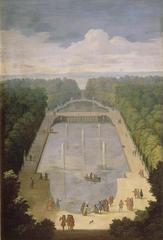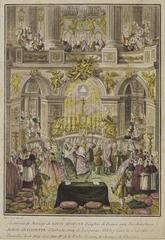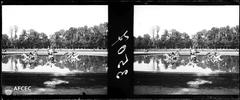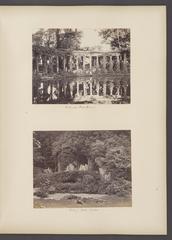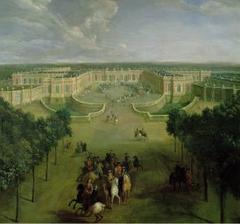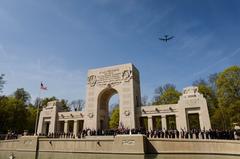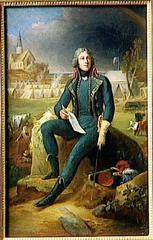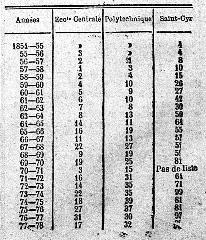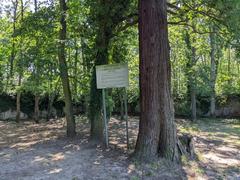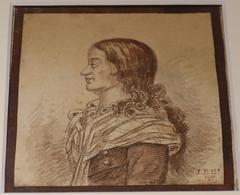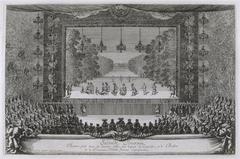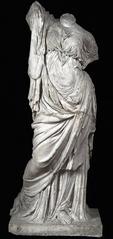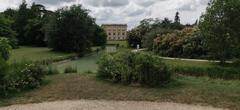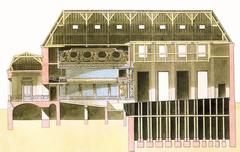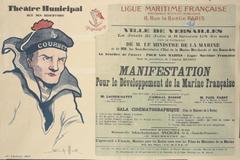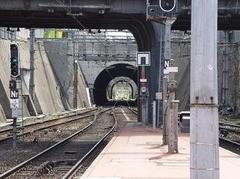
Visiting the Ménagerie Royale de Versailles: Tickets, Hours, and Attractions
Date: 04/07/2025
Introduction: The Legacy of the Ménagerie Royale de Versailles
The Ménagerie Royale de Versailles is a remarkable testament to both the grandeur and scientific ambition of Louis XIV’s France. Founded in the 17th century, the menagerie was far more than a collection of exotic animals—it was a showcase of royal power, artistic expression, and early zoological study. Conceived by architect Louis Le Vau, the octagonal pavilion and its surrounding enclosures were set within the formal gardens of the Château de Versailles, housing animals ranging from ostriches and flamingos to elephants and tropical birds. This blend of Baroque architecture and natural history not only embodied the Sun King’s vision of dominion over nature but also influenced the creation of modern zoological gardens throughout Europe.
While the original buildings have not survived, the Ménagerie’s site remains an evocative part of the Versailles estate. Visitors can experience its history through walking the grounds, participating in themed tours, or immersing themselves in the acclaimed virtual reality (VR) experience, “Versailles: Les Jardins Disparus du Roi-Soleil.” This VR journey brings the lost gardens and menagerie to vivid life, combining historical research with interactive storytelling.
This comprehensive guide provides all the essential information for planning a visit, from historical context to practical visitor tips, ensuring you can make the most of your experience at this unique site within the Versailles estate.
Table of Contents
- The Ménagerie Royale: A Blend of History and Nature
- Origins and Construction
- Role in Court Life and Symbolism
- Scientific and Cultural Influence
- Decline and Legacy
- Visiting Today: Hours, Tickets, and Accessibility
- The Virtual Ménagerie Experience
- Travel Tips and Visitor FAQs
- Exploring Nearby Attractions
- Practical Recommendations for Your Visit
- Conclusion and Resources
The Ménagerie Royale: A Blend of History and Nature
Set within the lush gardens of Versailles, the Ménagerie Royale was a highlight of Louis XIV’s court. It reflected both his fascination with the exotic and his desire to impress visitors with the scope of his realm. The site became a place of wonder, diplomacy, and early scientific observation, influencing not just French culture but also the development of zoological gardens across Europe.
Origins and Construction
The menagerie was established in the early years of Louis XIV’s reign, with construction beginning in 1663. Architect Louis Le Vau designed an octagonal salon at the heart of the complex, surrounded by seven enclosures for different animal species. By 1668, the menagerie housed a vast array of animals, from common poultry to rare birds and exotic mammals. The project was inspired by earlier European royal menageries, but Versailles’ scale and architectural ambition set it apart (Absolute Animals: The Royal Menagerie and the Royal Labyrinth at Versailles).
Role in Court Life and Symbolism
More than a private zoo, the menagerie was an important venue for court life. Privileged guests dined in the octagonal salon, while the king used the site to display both his wealth and his ability to control the natural world. Some animals were eventually served at the royal table, blurring the line between spectacle and sustenance. The menagerie also supplied the court’s kitchens with poultry and game, while more exotic creatures symbolized royal grandeur and the breadth of French influence.
The proximity of the menagerie to the Royal Labyrinth reflected a symbolic journey from chaos to order—visitors passed from the labyrinth’s allegorical animal fables to the harmonious displays of the menagerie, reinforcing Louis XIV’s image as a civilizing force (The King’s Menagerie: The Sun King’s Animal Kingdom at Versailles).
Scientific and Cultural Influence
The Ménagerie Royale was a center for early zoological study and natural history, with its animals inspiring art, literature, and philosophical debate. The site was referenced in scientific works such as “Mémoires pour une histoire naturelle des animaux” (1676). Artists like Nicasius Bernaerts documented the animals and architecture, while philosophers used the menagerie as a symbol in discussions about civilization and nature (en.wikipedia.org).
Decline and Legacy
By the late 18th century, the menagerie’s importance diminished. The Royal Labyrinth was removed in 1778, and the menagerie itself was destroyed during the French Revolution. The original buildings were demolished by 1902, leaving only subtle landscape traces. However, its influence persisted in the design of other European menageries and in the broader history of science, art, and landscape architecture (fr.wikipedia.org).
Visiting Today: Hours, Tickets, and Accessibility
Hours and Admission
- Versailles Gardens and Park: Open daily (April–October: 8:00 AM–8:30 PM; off-season: 8:00 AM–6:00 PM). Hours may vary on holidays (Château de Versailles Official Website).
- Admission: Access to the gardens and the menagerie site is free. Entry to the palace and some exhibitions requires a ticket (Château de Versailles Official Website).
Accessibility
- The gardens and menagerie area are largely accessible, with mostly flat paths. Some areas may be uneven due to historical landscaping.
- Wheelchair access and assistance are available; contact the estate ahead of your visit for arrangements.
Getting There
- By Train: RER C from Paris to Versailles Château – Rive Gauche station, followed by a 10–20 minute walk.
- By Car: Parking available on-site or in nearby public lots.
On-Site Facilities
- Restrooms and refreshment kiosks are available within the Versailles grounds.
- Informational signage is present at key points, but the menagerie site itself has minimal interpretation—consider using digital resources or guided tours for context.
The Virtual Ménagerie Experience
The innovative VR experience “Versailles: Les Jardins Disparus du Roi-Soleil” offers a meticulously researched, 25-minute immersive journey through lost wonders of the Versailles gardens, including the Ménagerie Royale. Visitors don HTC VIVE headsets and are guided by a virtual André Le Nôtre, exploring recreated landscapes and encountering animals as they would have appeared in the 17th century (VIVE Arts Blog on VR Experience; Le Château de Versailles ressuscite ses jardins disparus grâce à la réalité virtuelle).
- Location: Within the Château de Versailles estate.
- Hours: March 25, 2025 – January 4, 2026, daily from 9:00 AM to 6:30 PM (last entry 5:30 PM).
- Tickets: €15 per person. Advance booking recommended (Château de Versailles Official Website).
- Age Recommendation: Suitable for visitors aged 8 and up.
- Accessibility: Accommodations made for visitors with reduced mobility; confirm in advance.
- Languages: Available in French and English.
Travel Tips and Visitor FAQs
Best Times to Visit
- Peak season is late spring to early autumn (highest crowds in July and August).
- For a quieter experience, visit in late autumn or early spring.
- Arriving early in the day ensures easier navigation and a more relaxed experience.
What to Bring
- Comfortable walking shoes; expect extensive walking on gravel and cobblestone.
- Layered clothing for changing weather.
- Sunscreen and water, especially in summer.
FAQs
Q: Is the Ménagerie area accessible year-round?
A: Yes, but hours vary by season.
Q: Are pets allowed?
A: No, pets are not permitted within the Versailles estate.
Q: Can I book guided tours?
A: Yes, both general and specialized tours (including the menagerie’s history) are available.
Q: Are tickets required for the menagerie site?
A: No, the site is within the free-access park; tickets are required for the palace and some exhibits.
Q: Is the VR experience suitable for children?
A: Yes, recommended for ages 8 and up.
Exploring Nearby Attractions
Enhance your day by visiting other highlights of the Versailles estate:
- The Palace of Versailles
- The Grand Trianon and Petit Trianon
- The Queen’s Hamlet
- The Grand Canal
Combined tickets and suggested itineraries are available on the official website (Château de Versailles Official Website).
Practical Recommendations for Your Visit
- Book tickets in advance for the palace and VR experience to avoid queues and sold-out times.
- Arrive early to enjoy the site before crowds grow.
- Check the weather to plan your outdoor exploration.
- Consider a picnic in the gardens for a relaxed visit.
- Use trams or rent bikes/golf carts to navigate the expansive grounds efficiently.
- Download the Audiala app for audio guides, event calendars, and personalized recommendations.
Conclusion
The Ménagerie Royale de Versailles embodies the intersection of royal ambition, scientific curiosity, and cultural creativity. Although its physical structures no longer stand, its legacy endures through landscape traces, archival records, and digital reconstructions. Whether walking the grounds, joining a guided tour, or experiencing the VR recreation, visitors are invited to step into the world of the Sun King and witness the enduring allure of Versailles’ historic landscape.
For the latest updates, ticketing information, and special event details, visit the official Château de Versailles website and consider enhancing your visit with the Audiala app.
Sources & Further Reading
- Château de Versailles Official Website
- Château de Versailles Tickets
- Versailles Park Visitor Information
- Absolute Animals: The Royal Menagerie and the Royal Labyrinth at Versailles
- The King’s Menagerie: The Sun King’s Animal Kingdom at Versailles
- VIVE Arts Blog on VR Experience
- Le Château de Versailles ressuscite ses jardins disparus grâce à la réalité virtuelle
Experience the enduring spirit of the Sun King and the wonders of the Ménagerie Royale—where history, science, and imagination converge.





